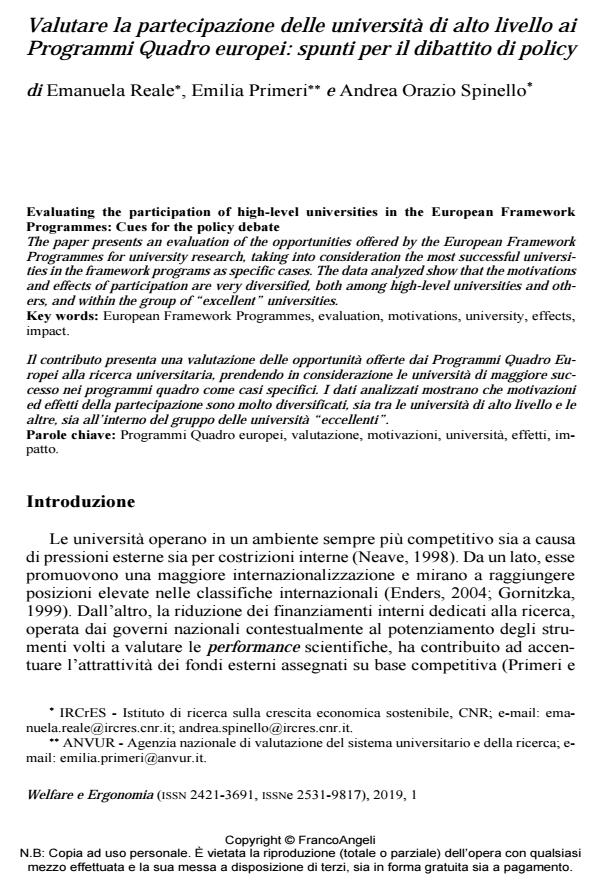Valutare la partecipazione delle università di alto livello ai Programmi Quadro europei: spunti per il dibattito di policy
Titolo Rivista WELFARE E ERGONOMIA
Autori/Curatori Emanuela Reale, Emilia Primeri, Andrea Orazio Spinello
Anno di pubblicazione 2020 Fascicolo 2019/1
Lingua Italiano Numero pagine 12 P. 43-54 Dimensione file 189 KB
DOI 10.3280/WE2019-001005
Il DOI è il codice a barre della proprietà intellettuale: per saperne di più
clicca qui
Qui sotto puoi vedere in anteprima la prima pagina di questo articolo.
Se questo articolo ti interessa, lo puoi acquistare (e scaricare in formato pdf) seguendo le facili indicazioni per acquistare il download credit. Acquista Download Credits per scaricare questo Articolo in formato PDF

FrancoAngeli è membro della Publishers International Linking Association, Inc (PILA)associazione indipendente e non profit per facilitare (attraverso i servizi tecnologici implementati da CrossRef.org) l’accesso degli studiosi ai contenuti digitali nelle pubblicazioni professionali e scientifiche
Il contributo presenta una valutazione delle opportunità offerte dai Programmi Quadro Eu-ropei alla ricerca universitaria, prendendo in considerazione le università di maggiore suc-cesso nei programmi quadro come casi specifici. I dati analizzati mostrano che motivazioni ed effetti della partecipazione sono molto diversificati, sia tra le università di alto livello e le altre, sia all’interno del gruppo delle università "eccellenti".
Parole chiave:Programmi Quadro europei, valutazione, motivazioni, università, effetti, impat-to.
Emanuela Reale, Emilia Primeri, Andrea Orazio Spinello, Valutare la partecipazione delle università di alto livello ai Programmi Quadro europei: spunti per il dibattito di policy in "WELFARE E ERGONOMIA" 1/2019, pp 43-54, DOI: 10.3280/WE2019-001005